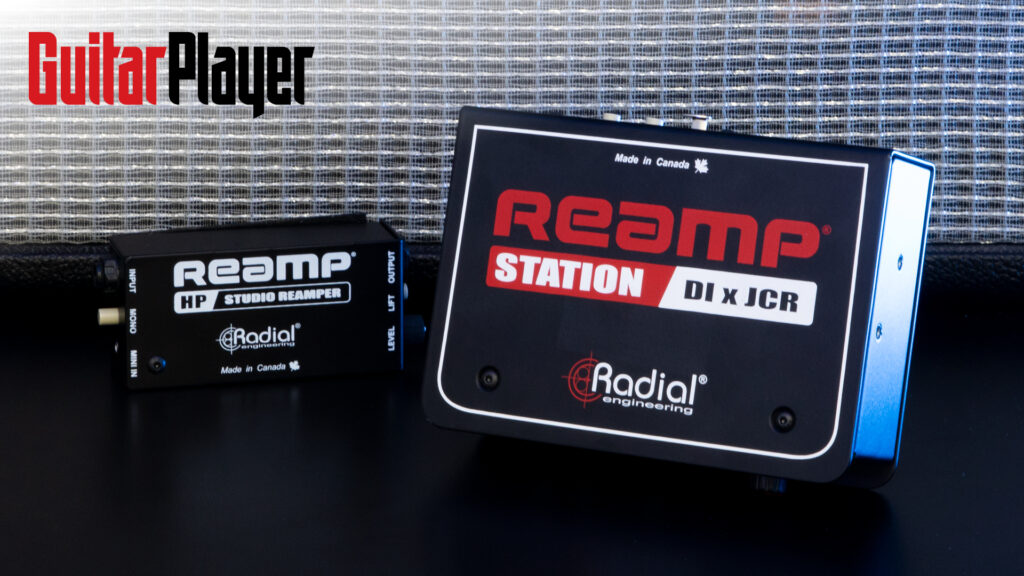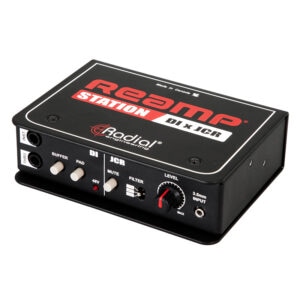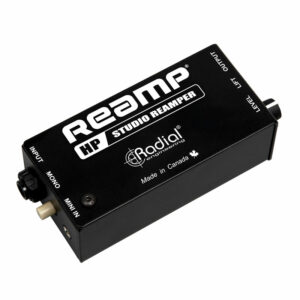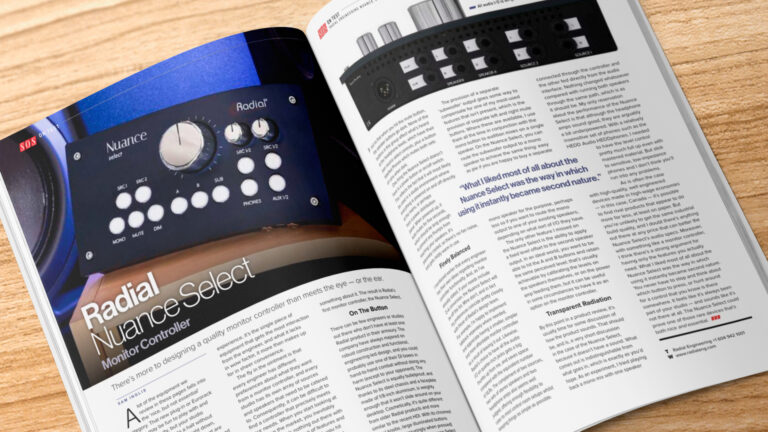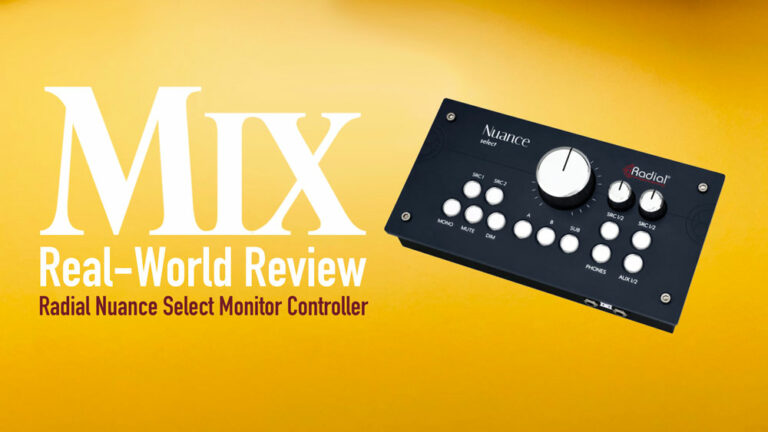The following review by
Radial Engineering Reamp® Station and Reamp® HP Reviews
Based on Joe Satriani engineer John Cuniberti’s design, these utility boxes tackle the job in ways that will suit everyone from home studio hobbyists to professionals
Getting the perfect guitar tone has never been easy, even for pros. For years, recording studios have used reamping as a way to get the most flexibility when processing guitar tracks and matching tones.
The procedure involves recording a dry, unprocessed guitar track, after which the recorded signal is routed into an amp (or several) and outboard effects to achieve a desired sound.
In essence, reamping allows producers and artists to delay critical decision making, keep their options open for future tone revisions and save time by eliminating the need to re-record a track to achieve a new tone. For that matter, the same track can be used to create layered and varied sounds.
Although reamping has been around for decades, it was popularized by audio engineer John Cuniberti(opens in new tab) – a.k.a. Joe Satriani’s longtime recording partner – with his 1993 creation of the Reamp®, the first commercially available reamping device.
In practice, Cuniberti’s invention converts the low-impedance, balanced line-level signal from a recorder to a high-impedance, unbalanced instrument-level signal suitable for amplifiers and effects pedals, to achieve optimum sonic results.
Cuniberti’s Reamp® is at the heart of two new devices from Radial Engineering, a Canadian company with a long-standing and well-deserved reputation for creating direct boxes, audio interfaces and other problem-solving tools for musicians and audio professionals.
Dubbed the Reamp® Station and the Reamp® HP, these utility boxes tackle the job in ways that will suit everyone from home studio hobbyists to professionals.
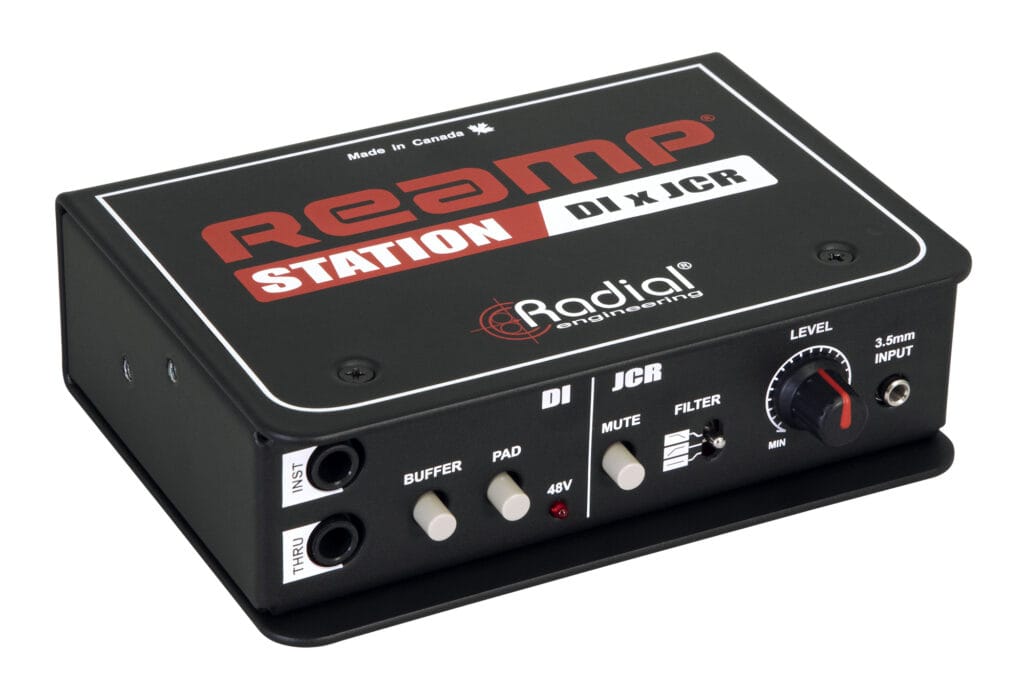
Reamp® Station
Let’s start with the Reamp® Station, an all-in-one solution that combines a DI for recording your guitar signal and a Reamp® for processing the track after it’s recorded.
Like many of Radial’s products (including a few of their DI boxes I own), the Reamp® Station is made from powder-coated 14-gauge steel. The unique construction features a C-shaped outer shell sandwiching the steel chassis that contains the electronics, with the outer edges of the shell forming a narrow protective lip over the various buttons, switches and knobs on the unit’s front panel.
This is where you’ll find controls for the DI, on the left half, and JCR, on the right. A reamped signal starts with a high-quality direct recording, so it’s great to see these two features combined in one box.
Radial’s DI is based on the company’s J48 phantom-powered active direct box designed for guitars and basses with all types of pickups. In a nutshell, the circuit increases headroom to significantly reduce distortion and produce the cleanest signal possible.
The DI runs off the 48-volt phantom power from your mixer, so there’s no need for an additional power supply.
The DI’s front panel includes a 1/4-inch instrument input and a 1/4-inch thru output to pass your signal to an amp for monitoring purpose. There’s also a button to engage a buffer on the thru output to avoid loading down passive pickups when connecting to an amp, and a pad button that reduces input sensitivity by 15dB when using high-output instruments like active basses.
Here as well is a helpful LED that lights up to indicate when phantom power is active.
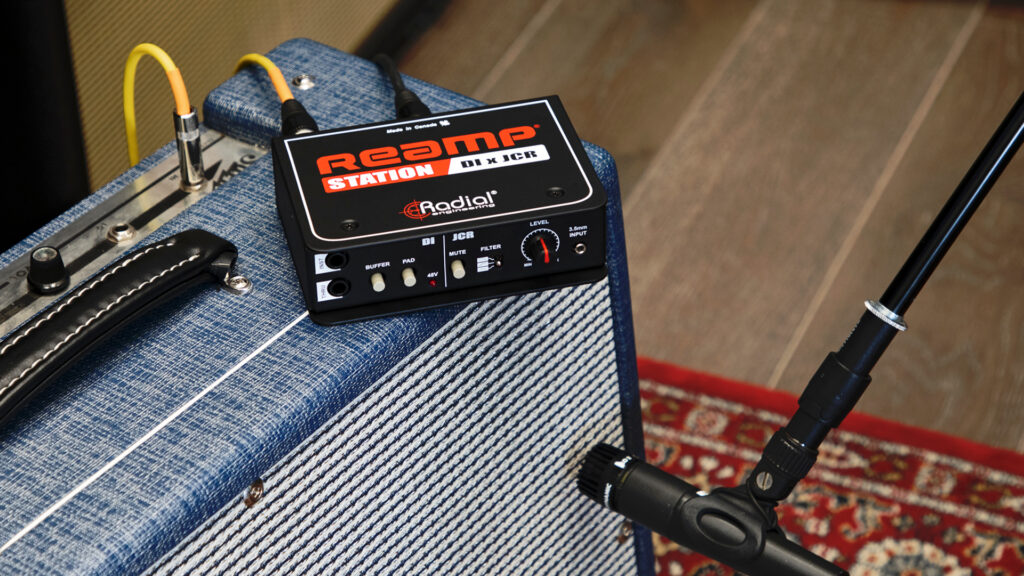
The DI’s features continue on the back panel and include a balanced XLR output for connecting a recording interface or mixer, and a 180˚ switch that reverses polarity at the direct output to reduce phase cancellation when the DI is combined with mic’d amp.
Once your guitar part has been recorded, the Reamp® Station’s JCR comes into use with a custom-wound USA-made transformer that converts line-level signals to instrument level. The JCR’s front-panel features include a 3.5mm input that lets you Reamp® signals from mobile devices and handhelds; a level control; a three-position filter with settings for high-cut, low-cut and flat frequency response; and a mute switch that cuts the signal to the 1/4-inch amp output on unit’s back panel.
Speaking of the back panel, this is where you’ll find the remaining Reamp® features. These include 1/4-inch TRS and XLR input for connecting to the line-level outputs of your recorder, an amp output to feed the resulting instrument-level signal to your amp, and link in and out jacks to connect multiple Reamp® devices for when you want to send one signal to more than one amp.
Also here is a ground lift to eliminate hum and buzz from ground loops.
All in all, the Reamp® Station is a compact but feature-packed device that leaves no reamping problem unsolved.
Specifications
- CONTROLS: Direct Box: Buffer, pad, 48V phantom power indicator, 180° polarity switch, ground lift. Reamp®: Mute, filter (high-cut/low-cut/flat), level, ground lift I/O Direct Box: Instrument, thru, direct out. Reamp®: 3.5mm audio input, Reamp® in 1/4” TRS and XLR, amp out, link in, link out
- DIMENSIONS: 5 7 /8” x 4 1 /8” x 1 3/4” (LxWxD)
- BUILT: Canada
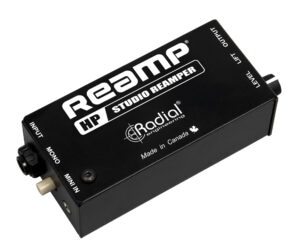
Reamp® HP
If you already own a DI box or just need a simplified reamping solution, the Reamp® HP has you covered. Measuring roughly four inches long by two inches wide and 1 3/4 inches tall, this compact, powder-coated 16-gauge steel box is well designed and laid out.
Unlike the Reamp® Station, the Reamp® HP uses the line-level signal from your recording device’s headphone output. To that end, the left side of the unit has 1/4-inch TRS stereo and 3.5mm input jacks, with a mono switch to sum the left and right channels when engaged.
When the mono switch is disengaged, only the right-side signal is received. At the other end of the box are a level control for the inputs and a 1/4-inch output with ground lift.
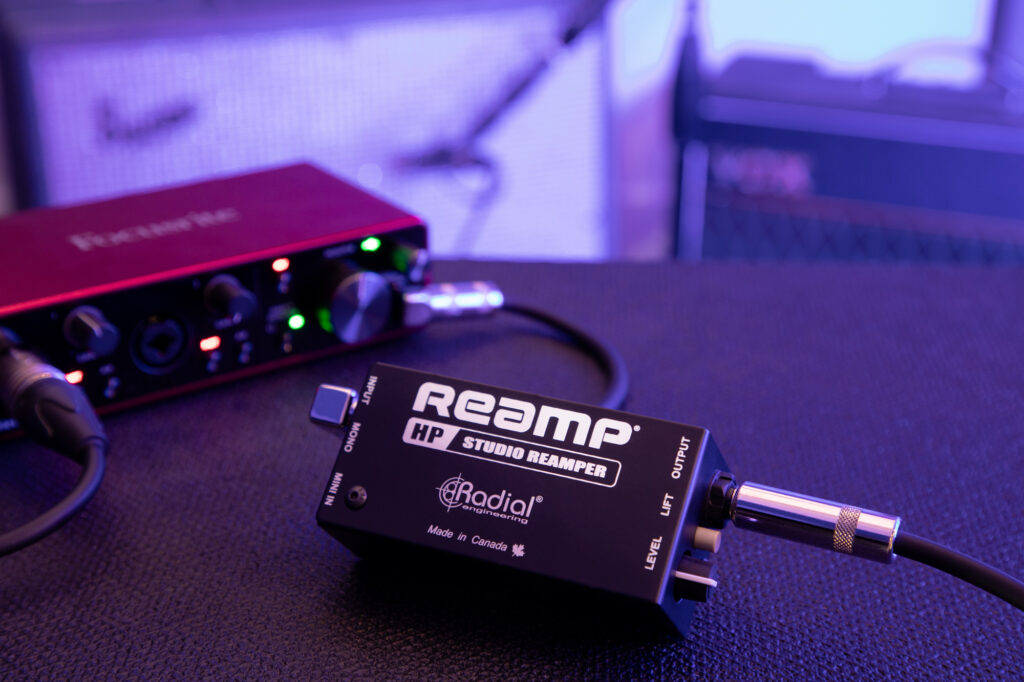
For testing purposes, I tried both units to DI a variety of electric guitars and acoustic-electric guitars into my DAW via a Tascam Model 12 mixer as well as an RME Fireface 800 digital audio interface.
Over several reamping sessions, I sent signals from the Tascam and RME unit’s main outputs to the Reamp® Station, as well as from each unit’s headphone outputs, to the Reamp® HP.
Destinations for reamping included a Fender ’68 Custom Princeton Reverb combo and a variety of effect pedals, among them an EarthQuaker Devices Special Cranker, a Gurus Echosex 3 Binson Echorec pedal and a Chase Bliss CXM 1978 Vintage Studioverb.
The quality of the Reamp® Station’s DI was outstanding, and no surprise there, given my experience with Radial DI boxes. The fact that Radial has packed so much versatile circuitry into a box not significantly larger than the J48, along with the Reamp® JCR, is truly impressive.
But it was when reamping that I really came to appreciate what each of these new devices can do. As a home recorder who works alone, I found it infinitely easier and convenient to dial in my desired amp tone by reamping my recorded signal, leaving my hands free to change settings on my amp and effects.
As a result, I was able to return a more perfectly sculpted guitar sound to my recorder, which required less knob twiddling during mixdown.
But better still is how both Radial reampers provide a path for connecting audio recordings to effects pedals. If you’ve invested in some high-end pedals, you’ll appreciate the new uses you’ll find for them with your DAW using the Radial reampers, all while improving your workflow and creativity.
For the most part, my studio-related purchases have been for gear that upgrades my signal path – digital audio interfaces, monitors, cables, etc. – but doesn’t add much in the way of versatility. Radial’s reampers do both and have quickly become much-used tools in my setup.
If you’ve been curious about reamping and take recording seriously, I can highly recommend making the Reamp® Station part of your rig. For combining clean DI with versatile reamping features, it handily earns an Editors’ Pick Award.
If you’re more of a hobbyist and want to try reamping on a budget, you’ll get loads of pleasure and creativity with the Reamp® HP, but be prepared: It’s certain to be your gateway to the more deluxe Reamp® Station.
Specifications
- CONTROLS: Mono sum, ground lift, level I/O 1/4” and 3.5mm stereo in, 1/4” TS output
- DIMENSIONS: 4” x 2” x 1 3/4” approx. (LxWxH)
- BUILT: Canada



